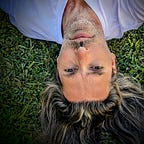Product Engineering — 3/4 Getting Real
Do you remember the epic book "Getting Real" 37signals put out thirteen years ago? If not, it is an absolute MUST.
However you call the method of your choice, Design Sprint, LEAN, Some version of agile, it all comes down to the same formula you were using when you were a kid playing with, let's say, a box of Legos.
- You have an image in your mind of what you want to achieve.
- You start by building something
- You look at the result and either
a) destroy it and go back to 2.
b) change it (iterate) by building or re-building (essentially going back to 2.)
c) or you are happy with the result and can start playing — if you are a company, playing means you can start producing, churning out product!
To put this into a picture Roger Martin, Dean of the University of Toronto’s Rotman School of Management uses in his research, the knowledge funnel, looks like this:
Every organisation, every project starts out with a lot of unknowns. This is called the mystic phase. You explore options, try to make sense and when slowly but surely the first patterns start emerging you have entered the second phase, the heuristic phase.
Now you know that some things are working, you don’t know exactly how, but soon you will. Once you have found out how things work exactly, you move forward to the third phase, the algorithmic phase in which you can now begin to turn your product into something repeatable. A new organisation or a new product is born.
This is what happens in phase 3 of Product Engineering. Based on the output of Phase 1 — Desirable State Modeling- we define the strongest vectors of attack, also called hypothesis during Phase 2-Adaptive Work Modeling to go on and play, explore, build, prototype until we have found a match that works in the real world.
Now we're ready for Phase 4. (will come soon)
